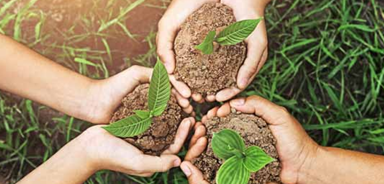An Investment, Not a Waste (GS Paper 3, Economy)

Context
- The editorial underscores a critical discourse around India’s agricultural policy, advocating for a shift in funding from food subsidies to agricultural research and development (R&D).
- This move is seen as vital for enhancing agricultural productivity and securing food resources in a country grappling with increasing challenges such as climate change, population growth, and food insecurity.
The Need for Enhanced R&D in India’s Agriculture Sector
- India's agricultural landscape is marked by pressing challenges, including low crop yields and the need for greater resilience against climate impacts.
- Prominent agronomist Ashok Gulati argues for a significant increase in investment towards agricultural R&D.
- Such investments could focus on developing crop varieties that are more resilient to climate stressors, alongside the implementation of innovative agricultural practices.
- Investing in R&D not only addresses the immediate productivity concerns but also aligns with broader goals of sustainable agricultural practices.
- In an environment where external conditions are increasingly unpredictable, leveraging technology and scientific research is essential for farmers to adapt and thrive.
- This proactive approach is necessary to maintain agriculture's foundational role in India's economy, which significantly contributes to employment and livelihood security for a large portion of the population.
Critique of Input Subsidies and Their Consequences
- The editorial critiques India’s existing system of input subsidies—specifically for electricity, fertilizers, and water—arguing that these policies foster resource inefficiency and environmental degradation.
- While these subsidies are intended to lower costs for farmers, they often lead to overconsumption of vital resources.
- For instance, excessive fertilizer use can degrade soil health, while unsustainable water use can lead to groundwater depletion.
- By shifting the focus from input subsidies to agricultural R&D, the country could promote sustainable agricultural practices.
- This shift could enable farmers to utilize resources more efficiently, reducing the negative environmental impact while enhancing crop yields and resilience.
Debating the Proposal to Cut Food Subsidies
- Gulati’s proposal to reduce food subsidies as a means to fund agricultural R&D ignites a critical debate.
- Food subsidies are crucial for ensuring that low-income families can afford staple foods, primarily through the Public Distribution System (PDS).
- Cutting these subsidies raises concerns about food security, particularly for the most vulnerable segments of the population.
- Food subsidies serve as a crucial safety net, providing financial support to households and allowing them to allocate resources for other nutritional needs, such as fruits, vegetables, and proteins.
- During crises—like the Covid-19 pandemic—these subsidies proved essential in maintaining food security, helping families cope with economic instability.
Understanding the Value of Food Subsidies as Social Support
- The editorial emphasizes the significant role of food subsidies in promoting social equity.
- For families earning below ₹20,000 monthly, the food subsidy translates into a substantial financial buffer, freeing up resources for other essential needs.
- The provision of staples like rice and wheat through PDS ensures that these households can manage their food budgets effectively.
- Critics of food subsidies may argue that expanded PDS coverage has led to increased expenditures.
- However, evidence indicates that broader access has effectively reduced systemic exclusion, helping more families receive necessary food support.
- The NFSA’s expansion—from covering 44.5% to 67% of the population—was achieved without significantly raising per capita grain allotments, showcasing an efficient allocation of resources.
Balancing R&D Investment and Food Subsidies
- The editorial advocates for a balanced approach to agricultural funding.
- While acknowledging the necessity of enhancing agricultural R&D, it cautions against undermining essential food subsidies.
- Instead, it suggests that policymakers explore reallocating funds from non-essential subsidies or less critical areas of expenditure.
- Investments in agricultural R&D, especially focusing on nutrition-rich crops like pulses and vegetables, could yield high returns.
- Enhancing productivity in these areas not only addresses food security but also contributes to better health outcomes for the population.
- Redirecting funds from less impactful subsidies could create a pathway for sustainable agricultural innovation without jeopardizing the food security of vulnerable communities.
Conclusion: A Balanced Approach for India’s Agricultural Future
- The editorial concludes by stressing the importance of a balanced strategy that prioritizes both agricultural innovation and food security.
- While the need for increased R&D investment is clear, cutting food subsidies could have unintended social consequences that disproportionately affect the poorest citizens.
- To foster a resilient agricultural sector, it is crucial to restructure existing subsidy programs, eliminating inefficiencies while preserving essential support for low-income households.
- Exploring funding reallocations from non-essential areas could enhance agricultural R&D without compromising food security.
- This multifaceted approach not only promotes technological advancement in agriculture but also safeguards the well-being of India’s most vulnerable populations, ultimately contributing to a more sustainable and equitable food system.


